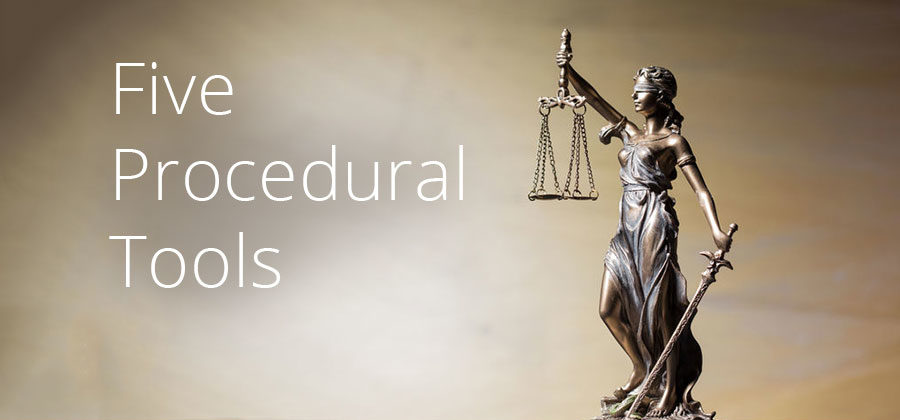While trial lawyering is hard, the Federal Rules of Civil Procedure and Evidence furnish tools that can help advocates cut to the chase and simplify issues for the presentation of evidence. Whether your audience is the judge or jury, these tools can flush out game playing and streamline your case. Consider the following.
1. Attack Bogus Affirmative Defenses
Every plaintiff’s trial lawyer knows that defendants use boiler plate pleading templates regardless of practice area. Often an answer and affirmative defenses will plead defenses that have no basis in the facts of the case. In Federal practice, courts may allow defendants some leeway on this score, since those same courts limit the right to later amend. State courts are usually a different story. Unless you have a judge who allows defendants leeway to plead shotgun affirmative defenses, you should consider filing a motion to strike factually unsupported affirmative defenses per FRCP 12 (f). As a fallback, once discovery is substantially complete, you should consider a motion for partial summary judgment attacking affirmative defenses unsupported by the factual discovery record. Whether or not you prevail, you will force your defendant to get specific about the factual support for the defense. The goal is to clear out bogus defenses before trial or at least know what you are going to face.
2. Use Requests for Admissions to Full Advantage
Requests for admissions are probably the most underutilized discovery device. Perhaps it’s because they are not so much a discovery tool, but rather a means to lock down assertions. But that begs a question: Why aren’t you locking down assertions that benefit your case? Use requests for admissions to authenticate your most important documents (rather than slog through authentication depositions). Use requests for admissions to establish the factual elements of your causes of action. Caveat: local rules may limit the number of requests you can serve absent a court order. With that in mind, get your judge to understand that allowing additional requests for admissions can streamline the case, and require less court and jury time at trial.
3. Take Corporate Representative Depositions
FRCP 30(b)(6) is one of the most powerful procedural devices available to plaintiff trial lawyers. Rather than guess who within a company or government entity has knowledge, you can literally force an entity to produce a person to testify as to designated areas of questioning. The entity has the duty to get the designee “up to speed” to testify at deposition. The deposition notice can be coupled with a document request. Sanctions are available if the entity decides to play games or fails to fulfill its duty to instruct the deposition designee.
4. Use Business Records and Electronic Evidence Certifications
This is a variation on the suggestion to use requests for admissions to authenticate documents. The rules of evidence allow you to authenticate business records and a compilation of electronic evidence, provided the custodian executes the appropriate written certification. Look at FRE 902 (11) & (13). You may want to couple a subpoena for production of documents upon a non-party with a request to certify, attaching the proposed certification for execution by the recipient.
5. Use Document Summaries
FRE 1006 enables a trial lawyer to create a document summary admissible at trial as a surrogate for voluminous documents. While the most obvious application is in commercial cases, one should think more broadly. A document summary could be used to simplify a medical history or an employee’s positive work performance. The possibilities are endless. Keep in mind that the underlying documents forming the basis for the summary must be made available to opposing counsel (and presumably previously produced per FRCP 26).
This list is by no means exhaustive. The point is to become familiar with the Federal Rules of Civil Procedure and Evidence and to realize they can help you tactically as a plaintiff trial lawyer. These tips and other ideas are covered in quick reference guides I have created to cover Federal Civil Procedure and Federal Civil Evidence law. Mastering these rules are a cornerstone to becoming a great plaintiff trial lawyer.


